Looking to transform your small garden on a budget? This guide is packed with affordable garden ideas to inspire you, with practical tips so you can breathe a new lease of life into your outdoor space, without breaking the bank.
Giving your garden a makeover can be expensive, but there are ways to cut your costs while making the most of the space you have, however small.
As well as our list of cheap garden ideas, we’ve also got tips to help you make your garden look bigger. If that’s your main priority, you might want to skip ahead to our section on maximising your space before coming back to read the rest of our tips.
Things to consider before you start
Before you spend a single penny or sow a single seed, you should spend some time making a gardening plan. Every garden is different, so there are multiple factors to consider.
🌿Treat yourself to some free gardening supplies on us this spring
We secured this exclusive offer, but our content stays unbiased.
Fancy earning £5 cashback on a £5+ gardening spend?

It's really simple: it takes as little as 30 seconds to sign up for your TopCashback account.
Buy your gardening supplies from any UK supermarket or garden centre, then upload a photo of your receipt. We'll track your purchase, and then you'll get cashback in your account to withdraw to your bank or as a gift card.
Here's how to get your £5 offer;
- Click: Click the green button
- Join: Create an account
- Shop: Purchase your £5+ of gardening supplies in store
- Snap: Take a photo of your receipt, showing the date, time, item and price
- Enjoy: We'll add £5 to your account once we track your purchase
This offer is valid from 2nd April 2025 at 00:01 - 30th June 2025 at 23:59, or until a redemption limit of 10,000 is reached, your snap should be submitted before the offer expires.
How does TopCashback benefit? We make money when you buy from supported brands, which allows us to offer cashback with no hidden fees.
 How much space do you have?
How much space do you have?
The bigger your garden, the more options you’ll have when it comes to things like zoning and tree planting. With less space, you’ll need to put more thought into what elements you introduce to your garden and where each of them will go.
 What’s your budget?
What’s your budget?
Creating a beautiful garden is often a long-term project that evolves over time. Don’t worry too much about deciding on a budget for your entire garden transformation, unless you plan to complete all of your renovations in a short time frame.
We’d suggest you take a look at your current finances and see how much money you can set aside for your project right now. You can use this to determine how many changes you can feasibly make to your garden currently, with the money you have. This will help you set realistic goals.
 Which jobs are most important and/or costly?
Which jobs are most important and/or costly?
After you’ve worked out your rough budget, it’s a good idea to order the jobs you want to do according to how important or time-pressing they are.
If you’re planning a big job like laying a patio, you might want to prioritise this and fit smaller jobs (like planting flowers and painting fences) around it. Completing the most expensive task first can also help you keep tabs on how much money you realistically have left to spend.
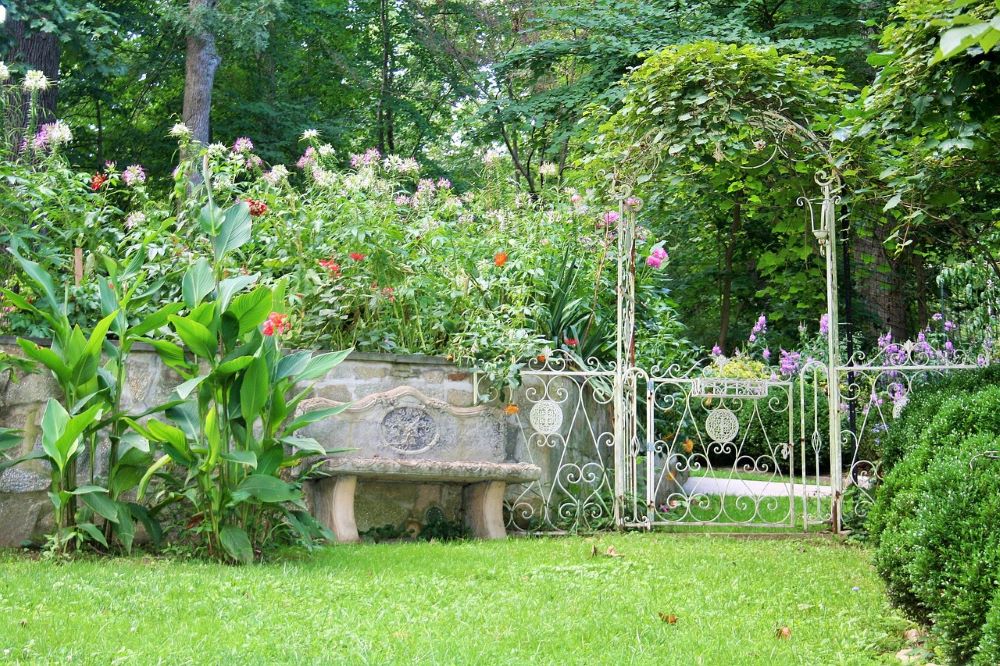
 What features are already in your garden?
What features are already in your garden?
If you can work with the features your garden already has, this will save you both time and money. Does your garden already have dug-out flower beds, a patio, or a stepping stone path? It will be more cost-effective to use these pre-existing features than to rip them out/dig them over and start again.
 What kind of sun exposure does your garden get?
What kind of sun exposure does your garden get?
The amount of sun your garden gets will play a big part in how you plan out your garden’s design. Sun exposure depends on the direction your garden faces, as well as what obstacles (such as other houses, sheds and tall trees) will block the sun throughout the day.
South-facing gardens get the most sun exposure throughout the day, while north-facing gardens get the least.
The parts of your garden that get the most light could be saved for your sun-loving plants, or perhaps some garden furniture for sunny days. Darker areas will be perfect for placing your garden shed or planting plants that don’t need much sunlight in order to thrive.
Planting solutions on a budget
Plants can be expensive to buy upfront and difficult to keep alive if you don’t know how to care for them. Here are a few easy and affordable ways to cultivate a garden of beautiful flowers, foliage and other plants.
1. Introduce plants gradually
Our most important tip for this section: don’t rush out and buy too many different plants all at once! Gardens are evolving things – you don’t need to pack your garden out with plants in the first year.
Start small and carefully nurture the plants you have until they’re nice and established. Then you can gradually introduce more species to create a thriving garden.
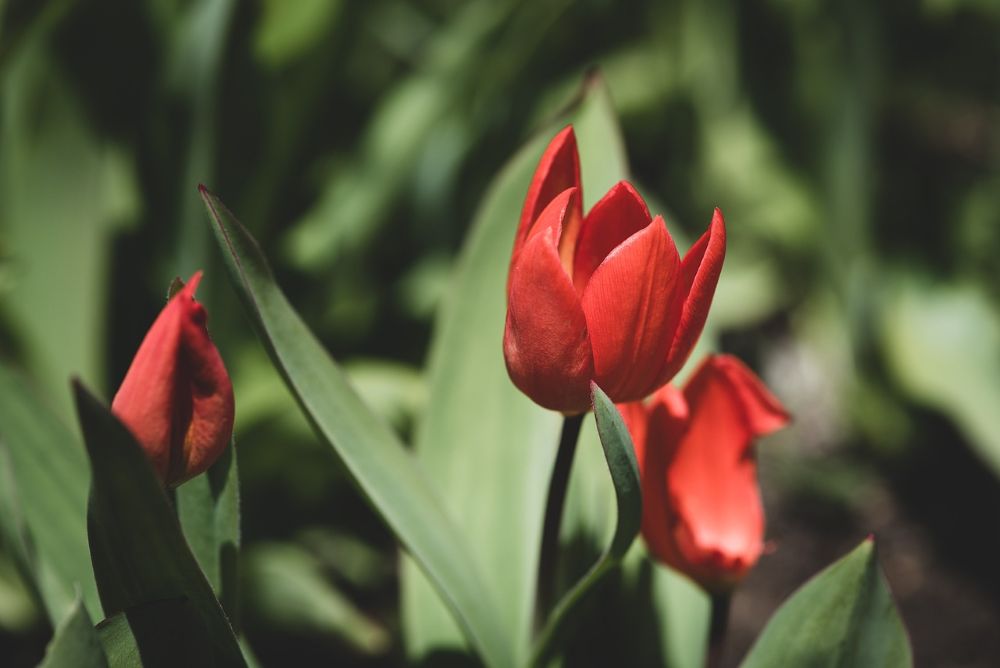
This is particularly important for people lacking in gardening experience. You don’t want to spend a load of money on lots of different types of plants, only to fall behind on their care. It could result in the plants dying before they’ve had a chance to get properly established in your garden.
2. Go for low-maintenance plants
The less care and maintenance your garden plants need, the higher the likelihood of them flourishing with less effort on your part. This means you can enjoy beautiful blooms every year without having to buy new plants, so you can save money.
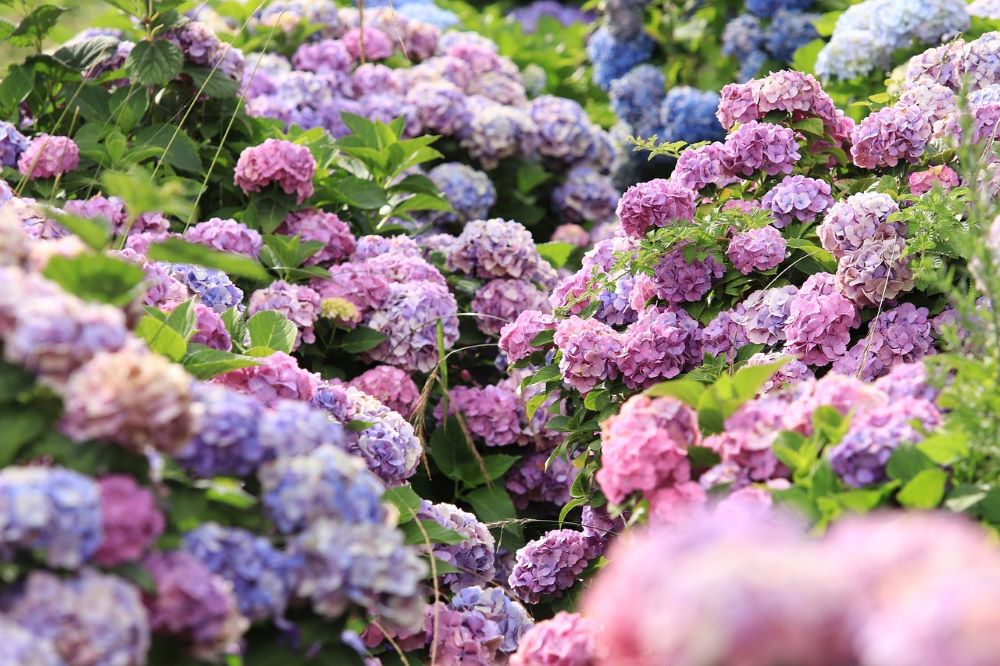
What are the easiest plants to take care of?
Perennials are the best plants for a low-maintenance garden, as they’re self-seeding and generally have long life spans. Because of this, they need very little input from you in order to thrive year upon year.
Here are some popular choices for low-maintenance perennials:







Another great tip is to invest in a range of plants that bloom at different times throughout the year. If you then spread these out across your flower beds, all areas of your garden will showcase beautiful blooms all year round.
3. Plant wildflowers
Wildflowers are perhaps the easiest and most low-maintenance flower to introduce into your garden.
All you need to do is lightly rake your soil, scatter the seeds over the soil by hand, and then rake a thin layer of soil back over the seeds.
Sowing seeds in mid-spring or early autumn will give you the best results. If you haven’t had rain in a while, a light sprinkling with a watering can will get your seeds started nicely.
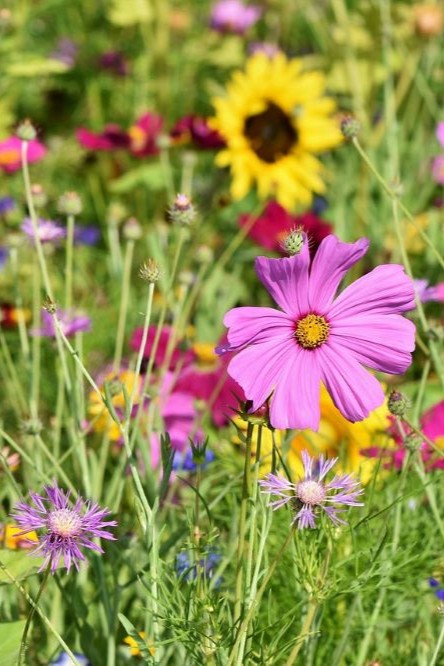
You can even scatter wildflower seeds straight onto grass, although they’re less likely to take if you haven’t prepared the ground first.
As Amy from TopCashback points out, ‘Wildflowers add a fantastic pop of colour and texture to your space, as well as attracting important pollinators.’
4. Plant vertically
If you don’t have much space in your garden, climbing plants are about to become your best friend. By encouraging plants to grow upwards, you can save on ground space without sacrificing plants altogether.
You can buy cheap wooden trellises online or from your local garden centre, or why not make your own using spare bits of wood from other DIY projects or even tree branches? Low-maintenance climbing plants include:





Make sure you consider where in your garden your trellis will go before you start buying plants. The level of sun exposure this part of your garden gets should dictate which climbing plants you go for.
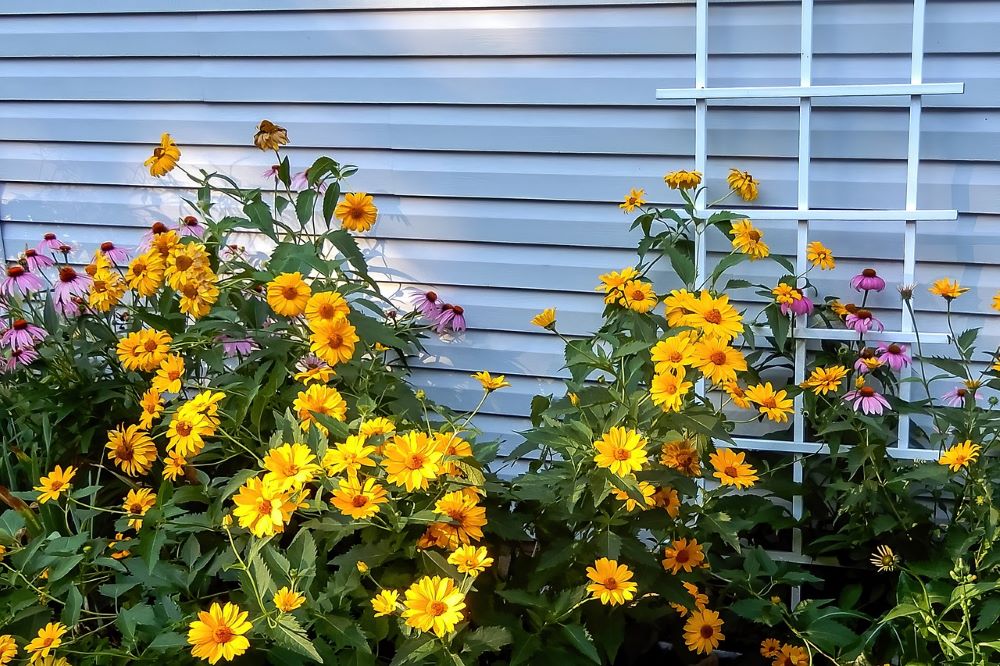
Wall pockets and hanging baskets are another excellent vertical gardening trick, allowing you to show off beautiful flowers without taking up space with a flower bed or planters. Inject some eye-catching colour into your garden using lobelia, petunias or aubrieta.
You can even grow vegetables and herbs using vertical wall pockets, which can save you money on future grocery shops.
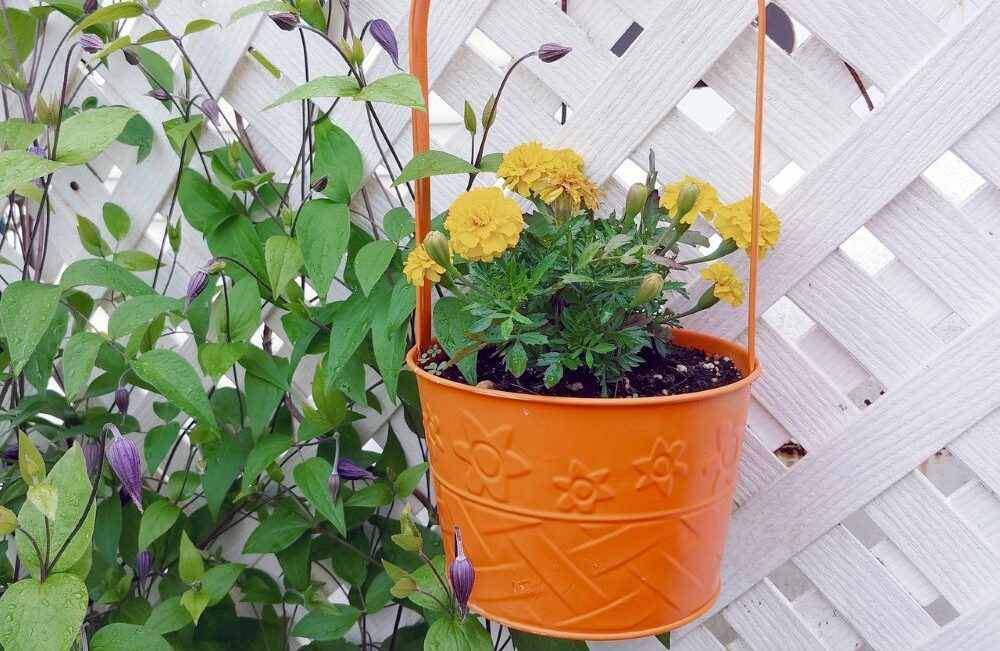
Vertical potting
With vertical potting, you won’t be limited to climbing or trailing plants. Plant whatever flowers you like into pots of various sizes, then stack them in a pyramid with the biggest pots at the bottom.
For plant pots that are both stylish and weatherproof, terracotta pots are a relatively affordable option. These will be ideal for the pots lower down in your pyramid especially as they’re often pretty heavy.
While this is a great garden design idea for saving on ground space, make sure you don’t squish any flowers in the stacking process!
5. Give your Christmas tree a second chance
If you like to buy a real Christmas tree each festive season, you could be missing a trick if you don’t replant it in the new year.
Spruce, fir and pine trees can make a wonderful addition to a small garden – they’re already well-established but are far cheaper than other types of trees (which could easily cost you hundreds of pounds).
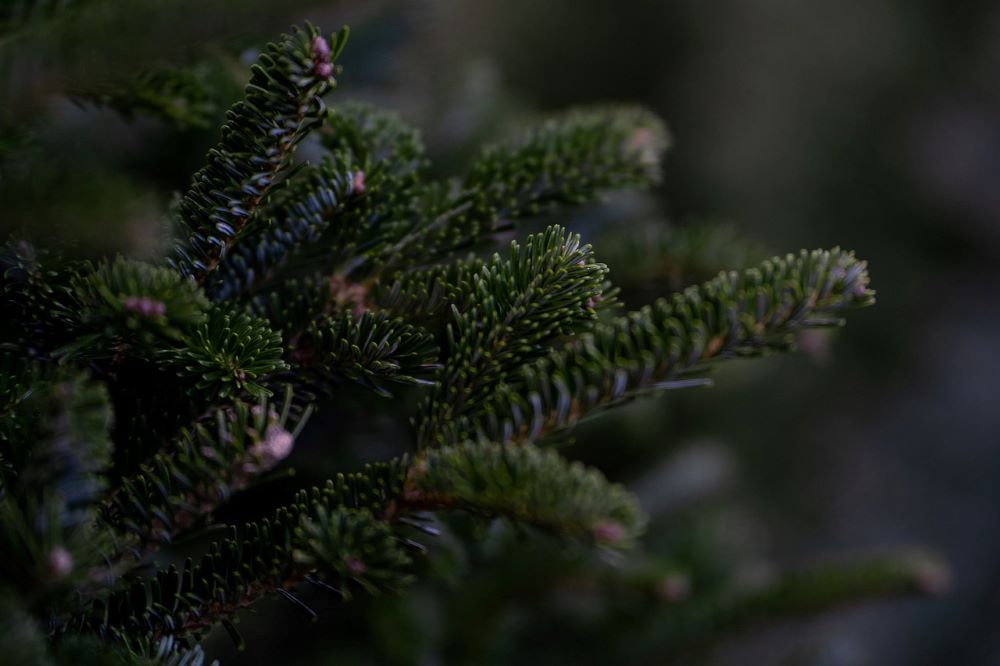
Not all Christmas trees will take to being replanted; trees that haven’t been indoors for too long will fare much better. To give your tree the best shot, help prevent it from drying out by keeping it away from heat (such as radiators and fireplaces).
Only Christmas trees with roots can be replanted, but even if you have a cut tree, you can still take cuttings and have a go at propagating your own. You’ll need to take your cutting as soon as possible, while the tree is still hydrated.
James at TopCashback is our go-to for advice when it comes to plants. He's given us some propagating tips:
'Growing your Christmas tree from a cutting isn't difficult to do, but it does require a good method and a decent amount of patience.
First, find a healthy branch that can bend very slightly towards the end without breaking. The bend test helps you know that it hasn't dried out and died.
Take an eight-inch cutting at a slight angle and remove all needles and buds from the bottom few inches near the cut.
If you have a rooting hormone powder or gel, dip the cut end into this. This will give you more success, but is not absolutely necessary.
Using a well-drained but slightly moist potting mix, plant the cutting about three inches deep, tamping the soil down afterwards to keep the cutting from falling over.
Finally, mist the cutting slightly and cover the pot with a plastic dome or bag and keep on a windowsill at room temperature or a little lower. 15-20oc should be perfectly fine.
Check in weekly to refresh the air and water the soil if it starts to dry out, and remove anything with signs of mould or rot.
Hopefully you should have a healthy cutting with new growth within six months.
It's worth knowing that the success rate of propagating Christmas trees at home isn't too high, so you might need to take five or more cuttings before you find one that survives.'
6. Source affordable planters or make your own
Planters and troughs are really popular garden trends in 2025. They look great and can make growing flowers, veg, herbs or other plants much easier.
You don’t have to splash out on expensive planter boxes either. Why not source some recycled materials like old wooden pallets, or fix some pieces of wood together to make a rectangular basin?
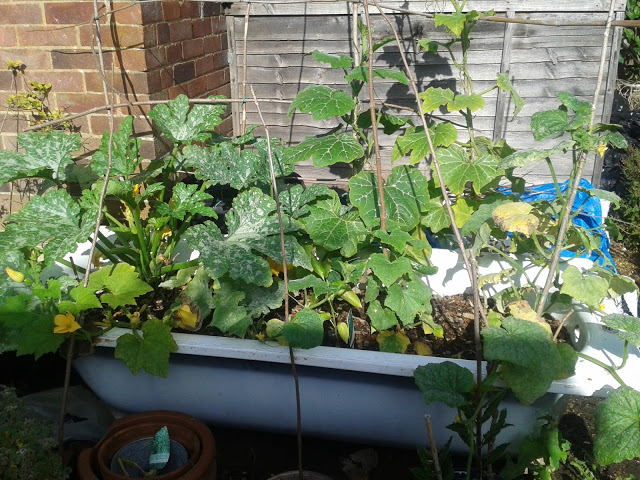
Image: Eco Thrifty Living
We’ve even seen old bathtubs and kitchen sinks upcycled into stylish raised beds – the possibilities are endless! Whatever you’re using, make sure you drill some holes in the bottom for drainage.
7. Dig your own flower bed
If you want to keep things classic, a traditional flower bed can be a cheap and low-maintenance addition to your garden.
To build a DIY flower bed, you’ll need:





Decide where in your garden you want your flower bed to go, then mark out the perimeter using string. Use a gardening spade to cut out the border, then dig out a few inches of the turf from the surface (enough to remove all of the grass and its roots).
Rake over the remaining soil to remove any weeds, roots or large stones, then add some compost or leaf mulch to the soil (this will help your plants grow). Rake over the flower bed area once more, then flatten down any soil mounds with the rake or your spade. Then all you need is some plants!
If you need a bit of help visualising the process, the video below breaks down the steps involved:
Tips to make your garden appear bigger
As well as our budget garden ideas, we also have plenty of tricks to make a small garden appear bigger. You might not be able to carry out all of these space-enhancing tips within your garden, but you could get some impressive results by carrying out even a couple of them.
8. Split your garden into distinct zones
By splitting your garden into zones, you can give the illusion of more space. Designated sections of your garden with different purposes will create a level of interest, giving your eye lots of elements to look over as you scan the space.
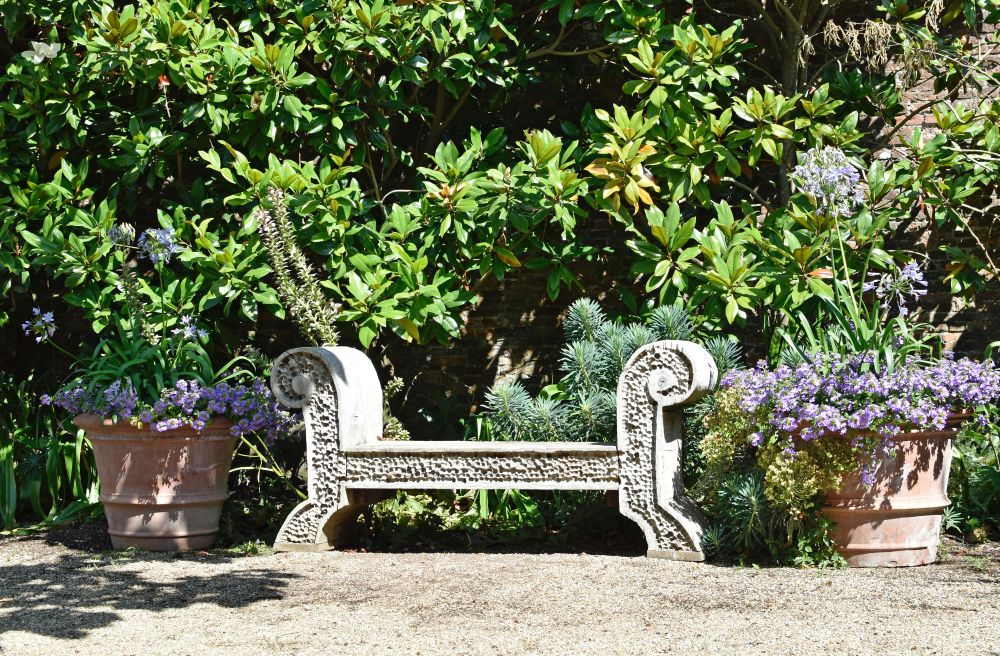
The types of zones you choose will depend on the shape of your garden, the sun exposure and your overall budget. For instance, if the end of your garden gets a lot of sun in the afternoons, this would be an ideal spot for a patio area or some wooden decking. If your budget doesn’t stretch to this, you could lay some gravel and buy some second-hand garden furniture for the end of your garden instead.
Variety is the spice of life, so introducing a few different aspects to your garden will make it feel like a more exciting space. Why not consider digging some flower beds or a small herb garden? You could even segment part of your garden using a trellis, or divide your space into zones by laying a winding path.
9. Use colour to create zones
If you don’t want to physically split areas of your garden into different zones, you can use colour as a subtle way to divide your garden instead. This will help you create individual areas of your garden without putting any physical blockades in place.
This could be as simple as planting flowers that are similar colours together, so you might have a section of yellow flowers at the end of your garden and a section of red flowers on the side.
This can work just as well for potted plants as it does for flower beds. You could even match the colour of the plant pots to the petals of your flowers.
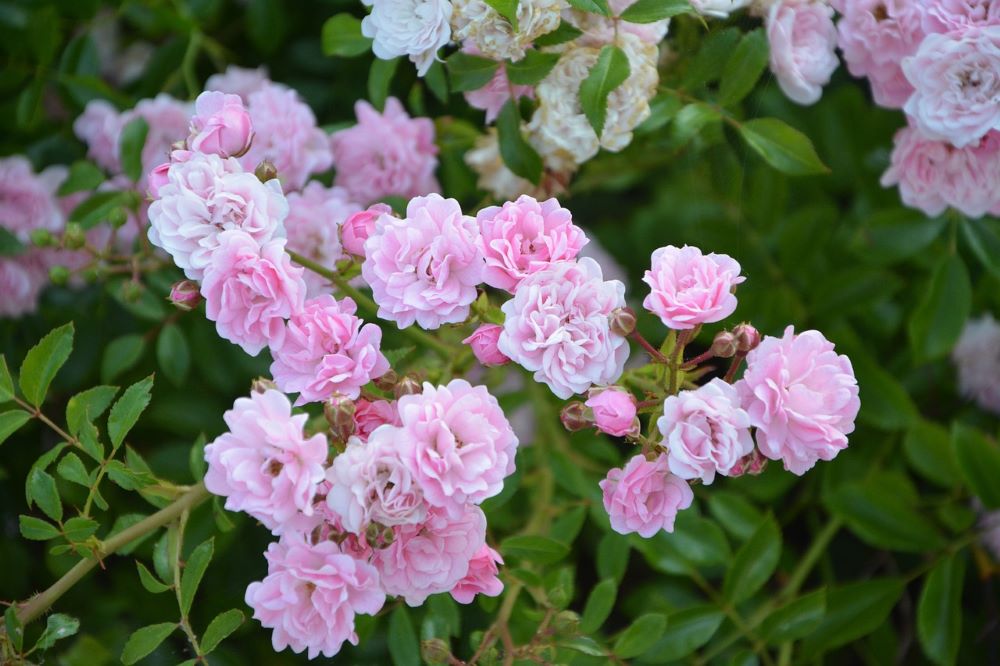
10. Use lighter colours to make things look larger
Colour is a very powerful tool for affecting how we see the world. An object’s colour can make it look bigger, smaller, closer, or further away.
Lighter colours will reflect natural light, whereas dark colours will absorb it. When light is reflected, this makes the surrounding space look bigger. Because of this, introducing whites, creams and pastel shades to your outdoor space will make your garden feel airier and more open.
For example, painting your garden fence a light colour will immediately open up the space. Longer fence panels especially can benefit from this, as they can be quite imposing otherwise.
11. Use colour to draw the eye to certain areas
The eye is attracted to brighter colours, so the brightest aspect of your garden will be the natural focal point. An easy way to introduce some vibrancy is in the plants you choose to grow.
On the flip side, if you have things in your garden that you want to drop back into the distance, consider a paler, softer paint colour. Pastel blues, greens and lilacs will drop further back, so painting your back fence in one of these hues will give the illusion of a longer garden.
You could also use this trick with your garden furniture if you’re planning to have it at the end of your garden.
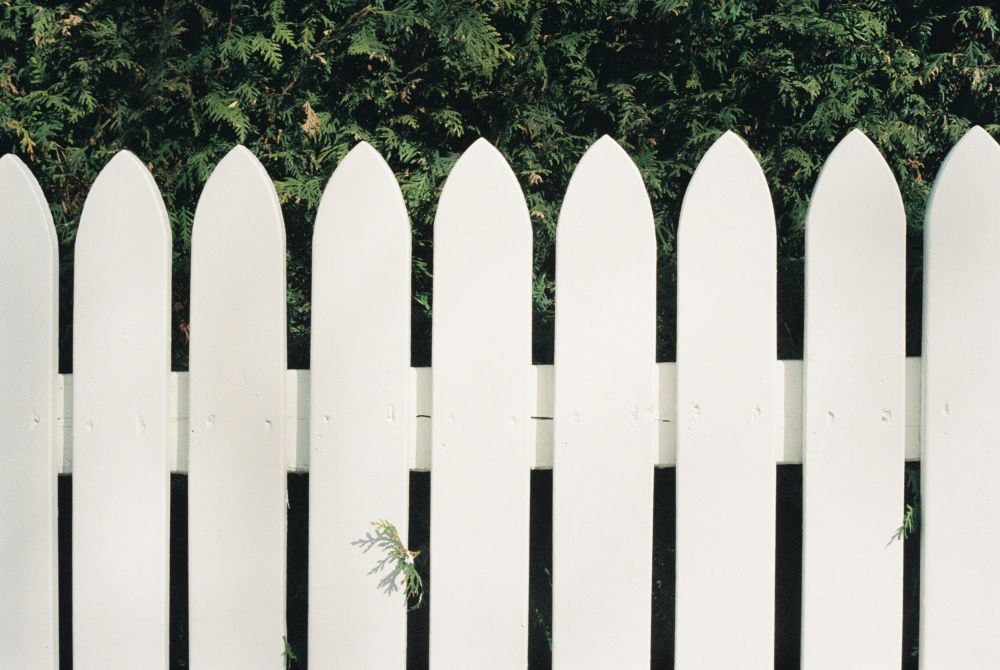
12. Use different textures
If you want to avoid going too crazy with colour, you can create extra interest by using a range of different textures in your garden. From feathery pampas grass to spiky yucca, smooth paving slabs to woodchips, it’s easy to bring some variety in the form of texture.
13. Hide or blur the boundaries of your garden
Strong, blocky boundaries can make a garden feel very enclosed, especially if it’s rectangular. If you’re able to blur your garden’s boundaries, this is a nice way to give the impression of more space.
If you have flower beds, consider planting bushier plants at the front to soften the border. Similarly, a winding path made from jagged or rounded stones or pavers is a better option than a blocky path going straight down the centre of your garden.
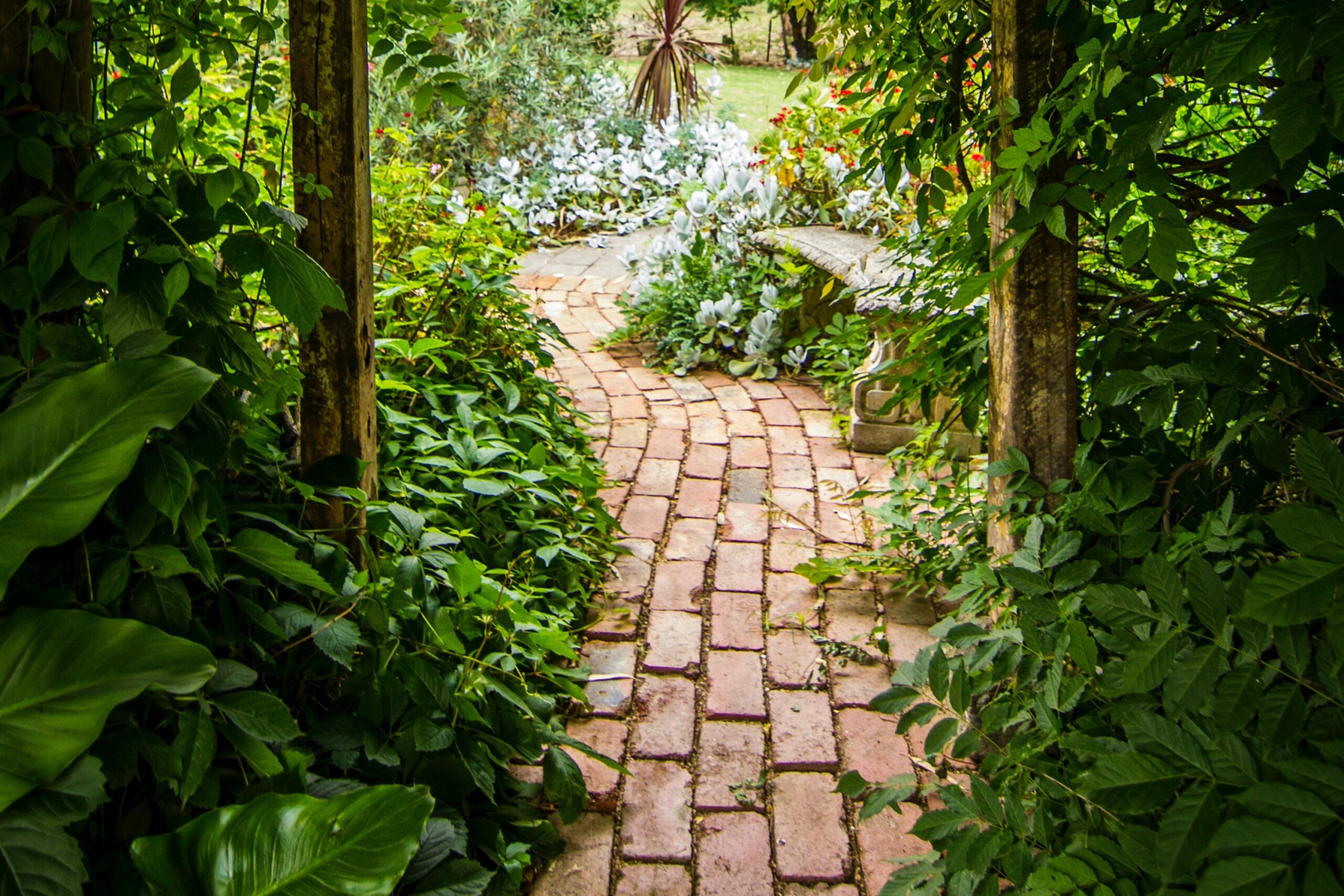
14. Layer your planting to create depth
Playing around with different heights is another way to give the illusion of more depth in your garden. By staggering the height of your garden plants so that the shortest are at the front and the tallest are furthest back, the eye will be drawn upwards, making the space seem bigger.
15. Use mirrors
Mirrors, when placed cleverly, can make a small-space garden feel immediately more roomy. The trick is to place your mirror somewhere where it’ll reflect an area of interest in your garden. If there are a few plants in front of the mirror, this will duplicate the plants and give the impression of a deeper area of foliage.
Why not go one step further by placing some garden lamps or fairy lights nearby? The mirror will reflect the light they give off after dark, illuminating the space beautifully.
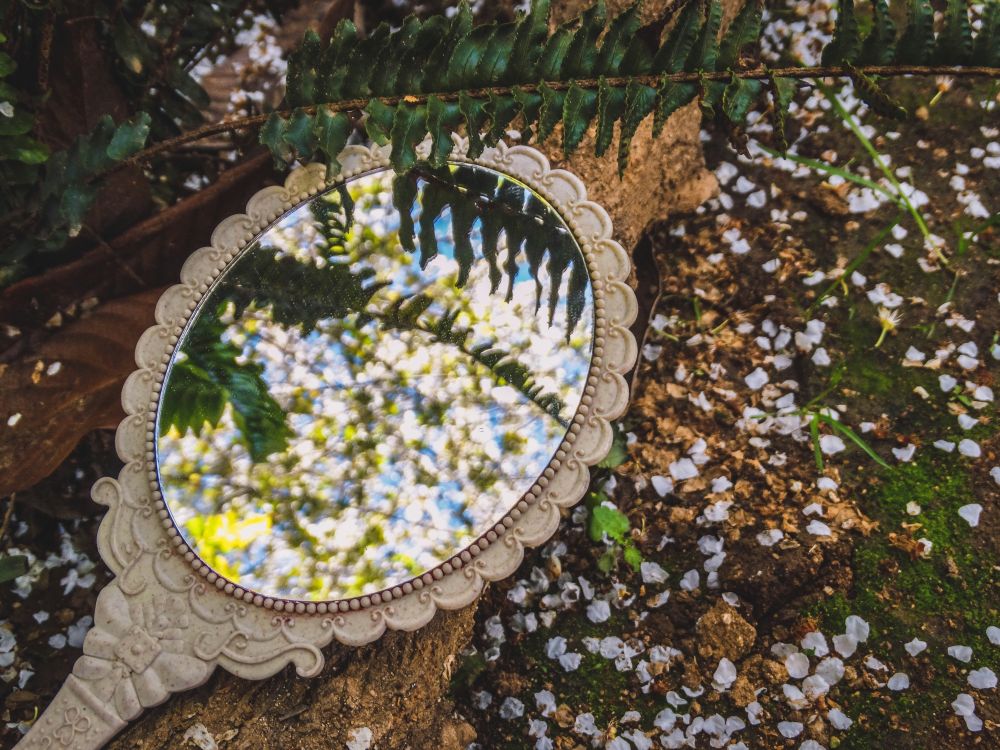
16. Think carefully about your garden lighting
Just like with thoughtfully placed mirrors, outdoor lighting positioned correctly can make your garden appear bigger. Remember our tip about lighter colours making things seem more open? The same goes for areas illuminated by light.
Attaching some solar lights to your back fence will help open up your garden after dark. For a budget-friendly option, go for solar lighting as you won’t need to worry about replacing batteries.
Another smart way to use lighting to your advantage is to put uplights at the base of any shrubs or trees around your garden’s perimeter. Lighting from underneath draws the eye upwards and will make your garden seem taller overall.
Patios, decking and more
Adding a patio or decking to your garden can be expensive, so these tips won’t be for everyone. But if you are interested in adding a seating or entertaining area, here are some top tips to help you keep the costs down.
17. Be smart with your space
The good news for those with smaller gardens is that any decking or patio you pay for will be on the smaller side too, therefore costing you less.
As we talked about earlier, having different elements in your garden can help build the idea of space. But if your garden is on the smaller side, a patio or decking area that’s too expansive can dominate the space. According to Gardener’s World, small gardens should have a ratio of about 50% planting and furniture to 50% paving or decking.
18. Lay your own patio
Laying a patio yourself is a much cheaper option than paying a professional to do it, as you pay for the materials and their time. This won't be for everyone, but if you have any friends or family who’ve laid a patio in the past, why not ask them to help you out?
Even better than buying new paving slabs, could you reuse old patio slabs from a neighbour or your local garden centre?
To widen the net, you could join some local Facebook Marketplace groups or look at community-sharing sites like Freecycle, Gumtree and Olio.
🌿Treat yourself to some free gardening supplies on us this spring
We secured this exclusive offer, but our content stays unbiased.
Fancy earning £5 cashback on a £5+ gardening spend?

It's really simple: it takes as little as 30 seconds to sign up for your TopCashback account.
Buy your gardening supplies from any UK supermarket or garden centre, then upload a photo of your receipt. We'll track your purchase, and then you'll get cashback in your account to withdraw to your bank or as a gift card.
Here's how to get your £5 offer;
- Click: Click the green button
- Join: Create an account
- Shop: Purchase your £5+ of gardening supplies in store
- Snap: Take a photo of your receipt, showing the date, time, item and price
- Enjoy: We'll add £5 to your account once we track your purchase
This offer is valid from 2nd April 2025 at 00:01 - 30th June 2025 at 23:59, or until a redemption limit of 10,000 is reached, your snap should be submitted before the offer expires.
How does TopCashback benefit? We make money when you buy from supported brands, which allows us to offer cashback with no hidden fees.
19. Lay a winding path
A stepping stone garden path is an easy and generally affordable way to add some interest to your garden.
Slate, granite or limestone slabs are all stylish choices for stepping stones. If you can upcycle them from elsewhere in your garden or rescue them from a neighbour, local tradesman or garden centre, you’ll save even more cash.
For an even more affordable garden path idea, consider using pebbles, gravel or woodchips. Before laying the stones or woodchips, dig out your desired shape, then line your path with landscape fabric to help keep your path stable over the years.
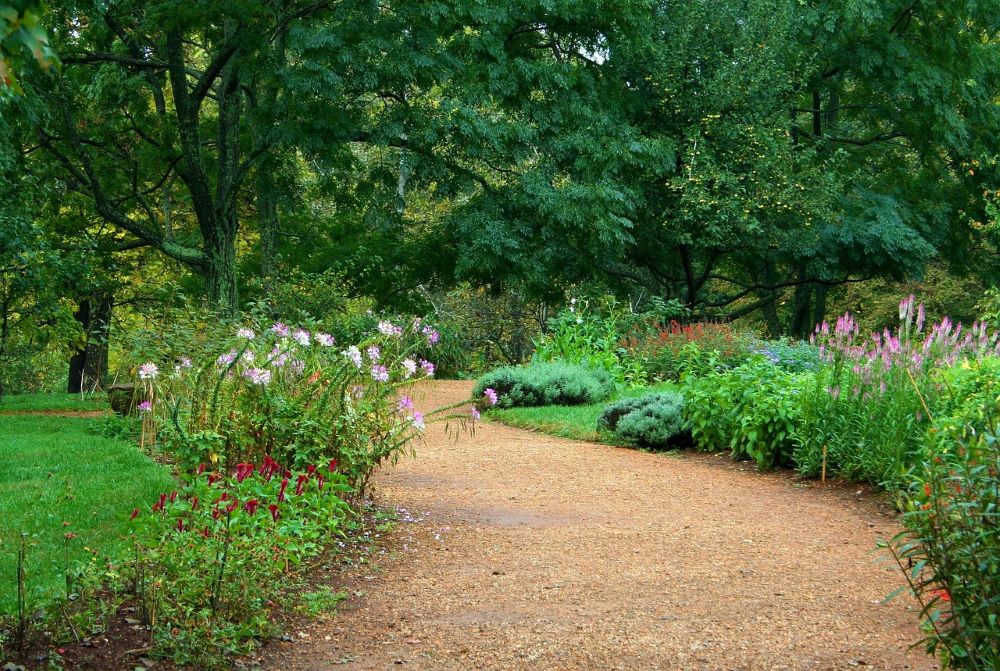
Small gardens can be made to look bigger by laying a winding, diagonal path. Diagonal lines direct the eye from side to side, rather than straight to the back of your garden, so it'll seem as though there is more open space.
20. Make your own bench
A DIY garden bench is a cheap alternative to investing in expensive outdoor furniture.
It’s even possible to make a garden bench without using any tools. Check out this tutorial on making a simple bench using just wood, concrete blocks and construction adhesive.
21. Neat catios for indoor cats to enjoy your outdoor space
Have a furry friend at home who’d like to spend some time outdoors? Catios are a fantastic way to let indoor cats enjoy some fresh air, without the risk of them running off and getting lost, or stolen.
As cats are such good climbers, you can build your catio up vertically, rather than expanding too far outwards, meaning you’ll save space. Make sure you choose a spot that’s not too sunny as your cat may overheat in the summer.
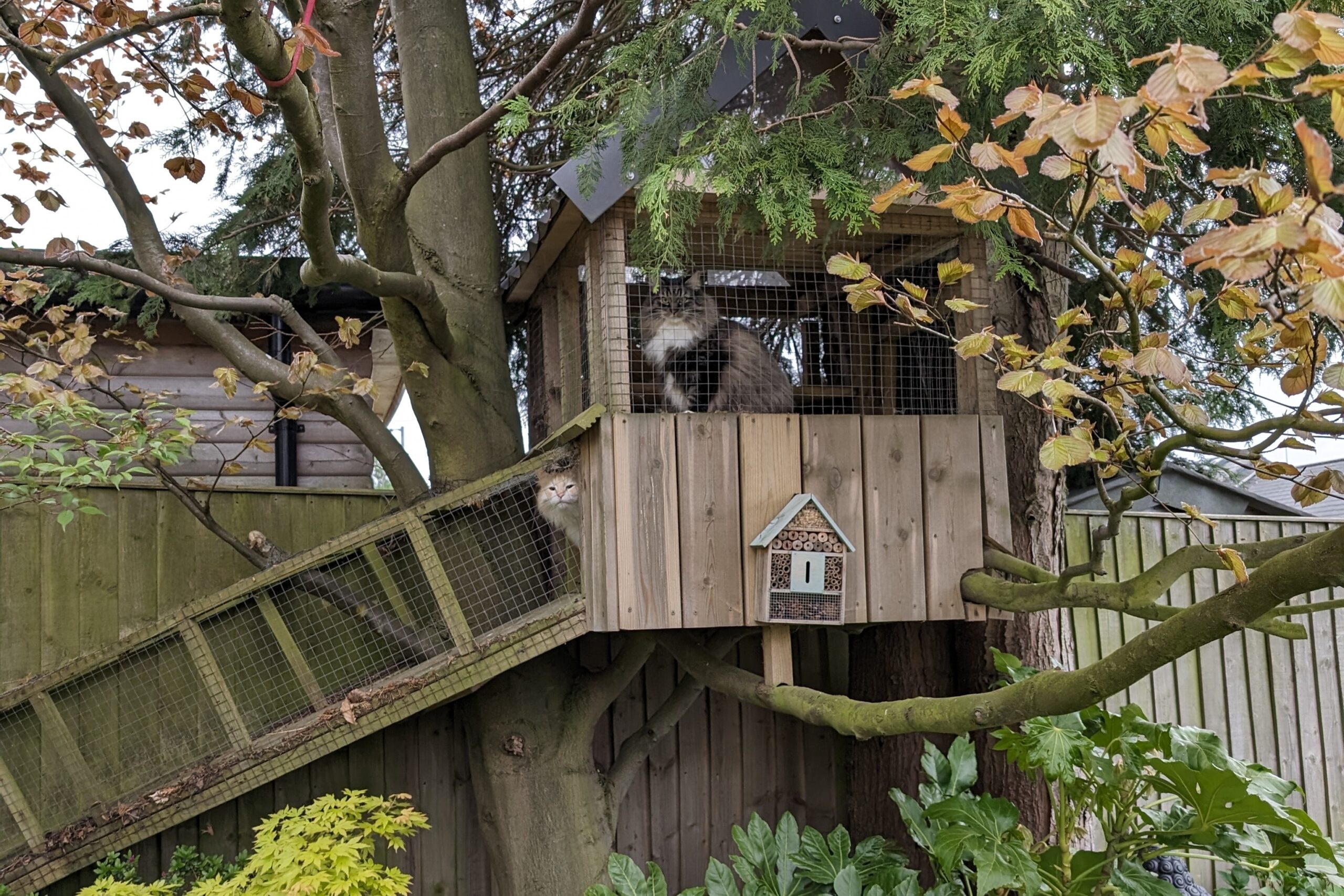
Amy at TopCashback knows a couple of very lucky felines who get to enjoy this beautiful outdoor catio.
Rake in those savings
Whether you’re looking for easy ways to make your outdoor space appear bigger or you’re planning a complete garden makeover, we hope this list of small garden ideas has given you some inspiration.
A garden renovation doesn’t have to break the bank – there are so many things you can do with your space that don’t involve a huge amount of money.
As long as you plan ahead, think carefully about how much space you have and stick to your budget, we’re sure you’ll be able to create something really beautiful.
What would you have, or grow, in your dream garden? Let us know in the comments.

 Get £15 cashback for joining TopCashback
Get £15 cashback for joining TopCashback
I would have a wildflower meadow and orchard in my dream garden.
That sounds absolutely beautiful Theresa!
~ Becca
Wisteria
Loads of cactus😁
Lots of lovely herbs.
Magnolia trees
Lavender
I would grow heather
I would create a vegetable patch using sleepers built of the ground. Organic vegetables grown in my own garden.
This is a wonderful idea Julie – I’d like to do this too!
~ Becca
Lots of flowers to encourage our wonderful Bees
I’d grow vegetables and herbs with my little boy so we can garden together
I Would Grow a Mainly Blue & White Garden With a Few Dashes Of Co’Ordinating Colour Mixed in with Bedding Plants.
I Would Grow Lily of the Nile, Roses, Lavender, Geranium, delphinium, White Cosmos salvia, White Viburnum, Hydrangea Paniculata, Acers, Palms Ferns, Hostas & Geranium for the Shade.
Climbers I Would Have White Jasmine, something I Have to Have is Laure Ford, Lemon Yellow Climbing Rose.
I Would Have Planting Pots On The Patio Of Bedding Plants. Usually A Co’ Ordinating few colours. I would Also Do the Same with hanging baskets & I would Have Feeders and Water out For the Birds & A Water Bath with Pebbles in so the Insects can enjoy the Water as well as the Birds.
Hydrangea everywhere
Peony’s
I would like to grow wysteria in my garden..maybe up and over a pergola
I would grow a border of wild flowers with s wigwam of sweet peas and some hydrangeas all my favourites
Lavender
Holly trees
Anything that would encourage the bees birds and butterflies
Low maintenance as only got boarders
Multi coloured phlox tumbling over the borders
Roses, daffodils, gorgeous new grass
If I had a large garden it would be trees but, with a small garden, it has to be roses.
After reading your useful tips I am going to make a plan of my garden.Ive already got some well established roses so I would like to invest on some perennials to grow in-between them.
I would have a rose garden full of all different coloured roses in the borders climbing ones over an arch and trellis at front and back of house and as they bloom all summer long with different fragrances this would be absolutely heavenly beautiful with the bees, butterflies and ladybirds and not forgetting our lovely singing birds.
unusual fruit trees, like quince, medlar, and mulberry
Peonies
Wild flowers
I’d love a little fruit patch – or an apple tree! A family member gifted me a tiny little apple tree which is in a pot and while it will take a while to grow, I can’t wait to plant it!
A Clematis Montana to hang over the balcony and climb along it. Gorgeous pastel flowers which should last for many years and give hours of pleasure throughout the year. A perfect spot for it!
Wildflowers and anything to help the local wildlife 🌻 🌷
I would just be happy for my grass to grow back
A big oak tree, with a treen bench round it.
Blueberries and raspberries, I can't get enough of them!!
Beautiful sunflowers 🌻
I would like to grow bougainvillea
Wish had my own garden
I would love to have my small little garden full up with pots of Jasmin, Roses, and Dahlias, alongside all my Gonk lights.
I would have a collection of different flowers so there would always be masses of colour. I would love a collection of alstroemeria in pots around my patio to give masses of cheerful blooms.
Sunny sunflowers!
Would grow lots of lavender to help keep away the midges!!
Sweet Pea's look & smell lovely
I would grow lots of Lavender. Love the smell.
I would fill my secret garden with heady scents – orange blossom, lilac, freesias, stocks and hyacinths.
Giant strawberries 🍓🍓
I would love to have a large enough garden to plant an Indian Bean Tree, with lots of fern-like foluage. Would love an area also with cottage garden flowers, and a beautiful arbour seat to relax and enjoy.
Clematis Jasmin sweet peas ferns freeshias geraniums daisies buttercups I love them all and two rose trees one for mum and one for dad who have passed
My Dream garden would be full of scented Lillie's!! And soft moss beneath my feet. Followed by a small wooden gate that leads to the woods.
I would love to grow a 'living den'. In the centre a willow tree then use the willow to build a dome underneath the tree encompassing the trunk. Surround the ground with snowdrops, native bluebells, daffodils, lavender and some herbs. Camomile grass inside the dome and as a natural pathway.
If i had the room I would love an in built hot tub, and garden room for my teenagers.
But we do have a BbQ and decking area and looking forward to giving it a makeover .
It would have to be seasonal bulbs and wild flowers to intice the wildlife into my garden.
I would grow garlic and onions and some wonderful green beans as well as cabbages and potatoes
Yellow Magnolias